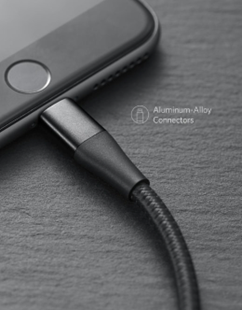Is the USB Reform Logical?
The transition from usb a to usb c data cables represents a significant milestone in technology evolution, carrying profound implications that extend beyond mere physical changes. This shift encapsulates advancements in standardization, user experience, industry dynamics, digital transformation, and environmental sustainability.

Does the USB Reform Make Any Sense?
Unification and Simplification of Technical Standards
The advent of USB-C marks a substantial leap in interface technology, unifying the previously fragmented landscape of USB connectors. USB-C's reversible design eliminates the frustration of inserting cables incorrectly, while its support for various protocols and standards (such as USB 3.1, USB 4, and Thunderbolt 3/4) enables a single cable to serve multiple purposes. This unification and simplification not only streamline users' cable management but also foster compatibility and interoperability among devices, fostering a healthier ecosystem for the industry.
Enhancement of User Experience
The transition to USB-C significantly elevates user experience. Its high-speed data transfer capabilities accelerate file transfers and charging times, sparing users from lengthy waits. Additionally, USB-C's robust power delivery capabilities, compliant with USB PD (Power Delivery) protocol, enable fast charging, further reducing charging downtime. The interface's expandability, allowing easy connection to multiple peripherals like monitors, keyboards, and mice through adapters or docks, adds to the convenience.
Evolution and Momentum of Industry Ecosystem
As USB-C gains widespread adoption, the entire electronics industry ecosystem is evolving. Manufacturers across the spectrum, from mobile devices to laptops and monitors, are embracing USB-C as the standard interface. This trend prompts upstream and downstream players to upgrade technologies and iterate products rapidly, aligning with shifting market demands. Concurrently, the proliferation of USB-C accessories, including cables, chargers, and adapters, spurs growth in related markets, creating new revenue streams.

Facilitation of Digital Transformation
Facilitation of Digital Transformation: Amid the ongoing digital transformation, USB-C serves as a powerful catalyst. Its high-speed data transfer capabilities and robust power delivery features underpin seamless data exchange and device connectivity, making it an essential tool for business informatization and data digitization processes. The versatility of USB-C in supporting multiple protocols and standards offers businesses flexible data transmission and power management solutions, enabling them to streamline operations, enhance productivity, and ultimately advance their digital transformation journey. With USB-C, businesses can harness the full potential of digital technologies, fostering innovation and driving growth in the digital era.
Environmental and Sustainability Considerations
The prevalence of USB-C also contributes to environmental protection and sustainability in a significant way. The proliferation of incompatible cables and devices associated with diverse USB-A standards in the past posed considerable challenges for recycling and disposal, leading to unnecessary waste and resource depletion. USB-C's standardization helps to reduce redundancy by eliminating the need for multiple types of cables and adapters, thereby enhancing resource utilization efficiency and minimizing the environmental impact of electronic devices. Furthermore, its support for fast charging technology curtails charging time and energy consumption, aligning with eco-friendly and sustainable practices. By enabling devices to charge quickly and efficiently, USB-C technology reduces the overall energy footprint associated with charging, ultimately contributing to a greener and more sustainable future. Overall, the widespread adoption of USB-C is a step towards promoting environmental conservation and fostering sustainable development.
Conclusion
The transition from USB-A to USB-C data cables embodies a pivotal moment in technological advancement. This shift not only unifies standards and enhances the user experience but also drives industry evolution and facilitates digital transformation. Additionally, the prevalence of USB-C contributes to environmental sustainability by reducing redundancy and supporting eco-friendly practices such as fast charging technology. As technology continues to progress and market demands evolve, USB-C is poised to play an increasingly vital role in shaping the future. Its versatility, efficiency, and compatibility make it a cornerstone for innovation, promising to bring further convenience and advancements to both our personal and professional lives.


